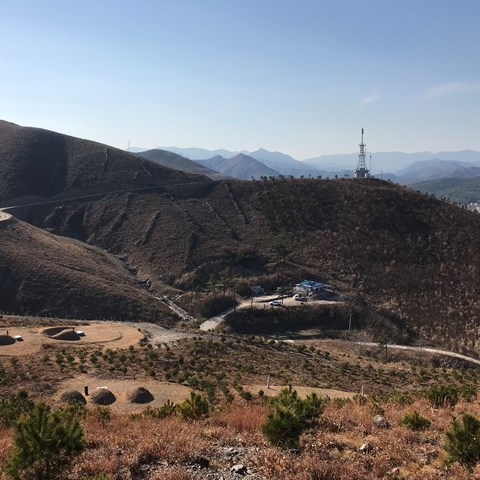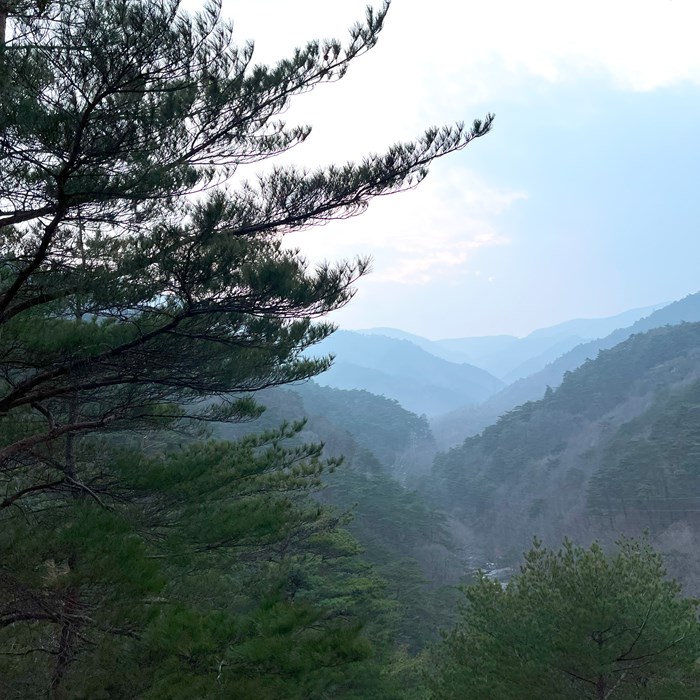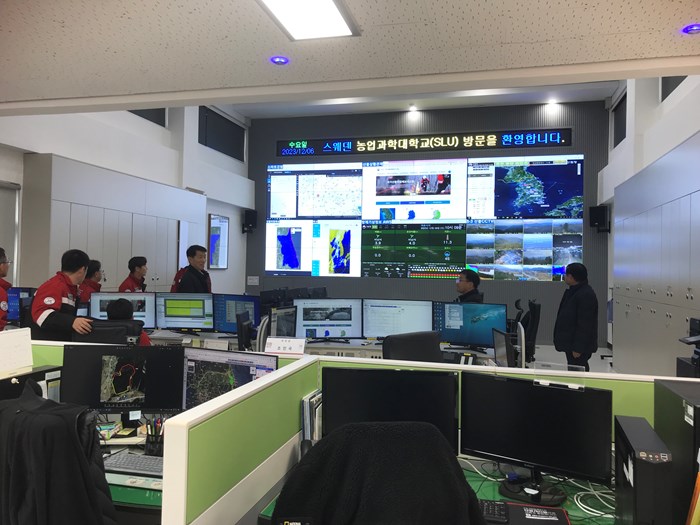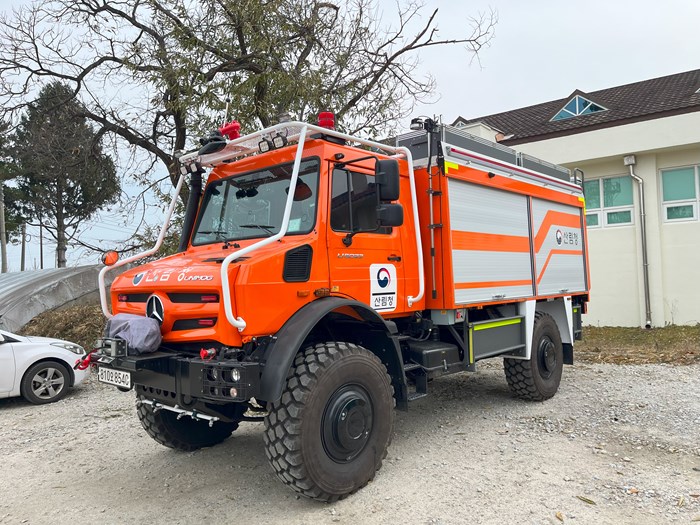Finding new ways to prevent and combat forest fires became a highly relevant question in South Korea during the spring of 2023. Close to 500 fires ravaged thousands of hectares of forest in the country, including around the city of Gangneung on the country's east coast.
This marked the starting point for Gangneung-Wonju University's very first Swedish visit, when forest fire researchers Anders Granström and Inka Bohlin, along with finanical officer Kyungjin Kim from the Swedish University of Agricultural Sciences, were invited to share their knowledge and experiences from the other side of the world. During a week in December, they met representatives from both the municipality and the university, as well as members of the South Korean forest fire rescue service. They also visited both fire-affected forest areas and those spared from the flames.
– It's shocking for a Swede to see this; A forest landscape where there is no forestry!, says Anders Granström, a forest fire researcher at SLU in Umeå, about the steep hills covered i green pine that they visited.
The absence of large-scale forestry also means an absence of the extensive network of forest roads which help the fire department in Sweden to reach inaccessible places. To complicate matters further, the country is much more mountainous than the forested parts of Sweden.
The Koreans have a special place in their heart for pine, and this was evident during the visit. Pine saplings were the most common sight in the previously forested parts now replanted after the fires, which is not optimal for preventing future fires.
– There is much potential for natural regeneration, especially for different oak species that emerge after the fire. They could be used as protection against future fires, says Inka Bohlin, an analyst at SLU's Forest Damage Center.
But unlike Sweden, there is a separate forest fire brigade here that fights fires with adapted methods. They have smaller, specially built vehicles that can navigate in difficult terrain. There is an extensive air defense system with helicopters. And, unsurprisingly in technologically adaptive South Korea, comprehensive remote-controlled camera surveillance closely monitored from a command center.
– They have cameras at the top of hills that monitor the area and that they can control and zoom in on remotely to see if a fire breaks out, says Inka Bohlin.
The interest in the visit by the Swedish trio was apparent and was covered by local news media in both newspapers and television. A South Korean visit to Umeå is planned for 2024, which bodes well for continued knowledge exchange and more formal collaboration. Even though the SLU researchers' knowledge was initially requested, there is much to learn from the South Koreans' methods in the fight against fires.
– It was very inspiring to see how they work with their helicopters and firefighting from the air. I think we definitely have something to learn from them in Sweden, says Anders Granström.




